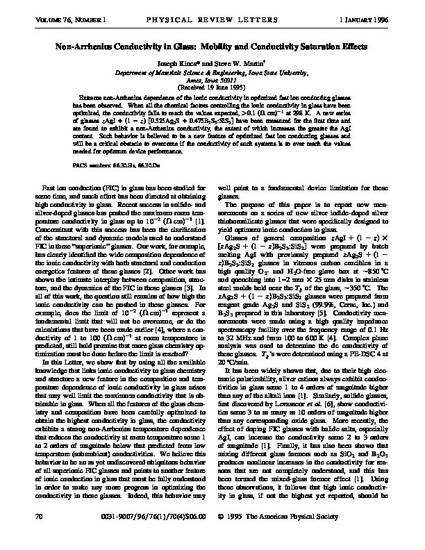
Article
Non-Arrhenius Conductivity in Glass: Mobility and Conductivity Saturation Effects
Physical Review Letters
Document Type
Article
Disciplines
Publication Date
1-1-1996
DOI
10.1103/PhysRevLett.76.70
Abstract
Extreme non-Arrhenius dependence of the ionic conductivity in optimized fast ion conducting glasses has been observed. When all the chemical factors controlling the ionic conductivity in glass have been optimized, the conductivity fails to reach the values expected, >0.1 (Ωcm)−1 at 298 K. A new series of glasses zAgI+(1−z) [0.525Ag2S+0.475B2S3:SiS2] have been measured for the first time and are found to exhibit a non-Arrhenius conductivity, the extent of which increases the greater the AgI content. Such behavior is believed to be a new feature of optimized fast ion conducting glasses and will be a critical obstacle to overcome if the conductivity of such systems is to ever reach the values needed for optimum device performance.
Copyright Owner
American Physical Society
Copyright Date
1996
Language
en
File Format
application/pdf
Citation Information
Joseph Kincs and Steve W. Martin. "Non-Arrhenius Conductivity in Glass: Mobility and Conductivity Saturation Effects" Physical Review Letters Vol. 76 Iss. 1 (1996) p. 70 - 73 Available at: http://works.bepress.com/steve_martin/34/

This article is from Physical Review Letters 76 (1996): 70–73, doi:10.1103/PhysRevLett.76.70. Posted with permission.